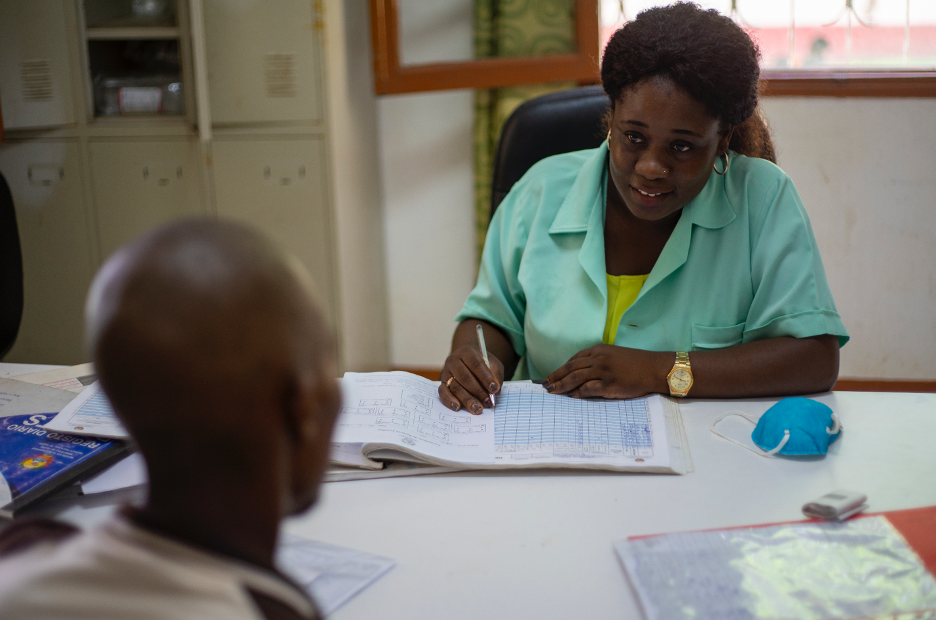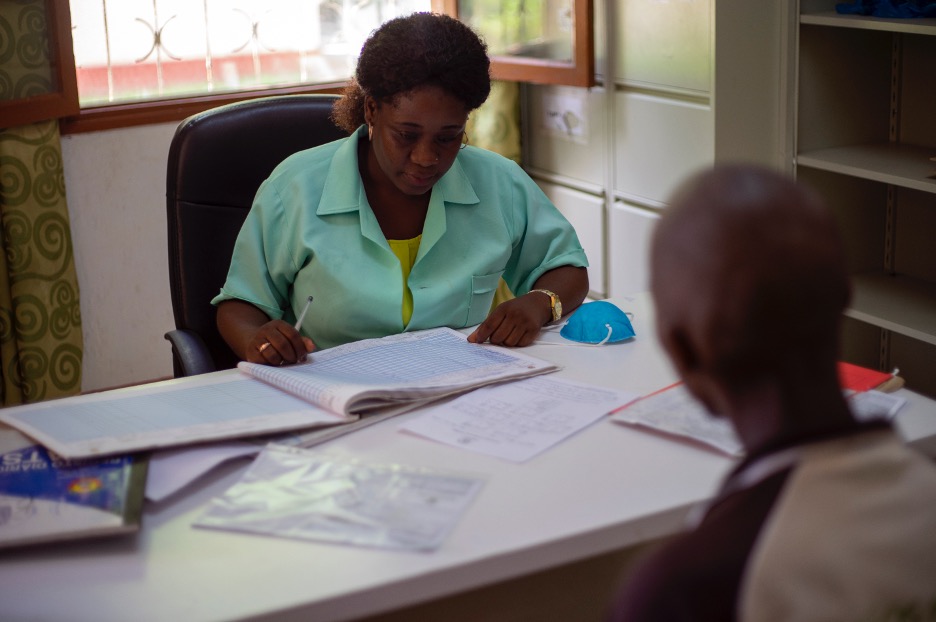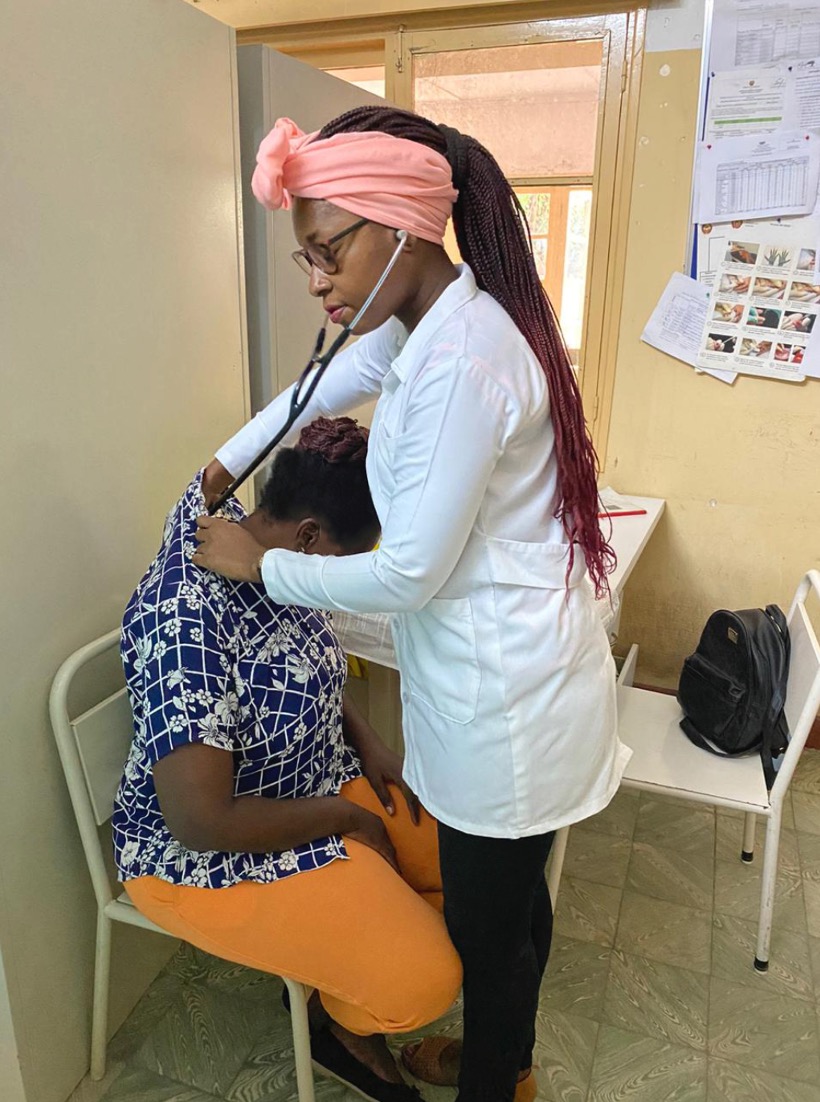Testing activity within triage ward and emergency room (ER) testing points within large Health Facilities (HF) is relatively low due to clinicians’ high workload. Consequently, there is low routine screening and referral of patients to HIV testing and counseling (HTC) services from these service delivery points. As a solution to this problem, FGH, in coordination with Mozambique’s Health authorities, implemented HIV HTC within emergency rooms facilitated by health counselors, which resulted in a considerable increase in the overall numbers of persons being tested and in the numbers of persons being newly identified as being HIV-positive

With the implementation of this new novel HTC strategy, Vilma Santos, an HTC health counselor who works in Quelimane City at the Maquival Sede Health Center has started to screen patients herself at the ER. Together with another counselor she supports the clinician in screening, easing the clinician’s daily workload, resulting in the HF’s increased capacity to identify new HIV- positive patients. Vilma and her coworkers have been able to witness the impact of this strategy firsthand, “We found a huge difference because the sector where I used to work did not have much productivity, but when I started working in the ER, I started to feel a lot of productivity, the testing and the data increased a lot. (...) I can track many patients because all the patients go through me before going to the doctor's appointment, and if necessary, I offer the HIV test.”
“We found a huge difference because the sector where I used to work did not have much productivity, but when I started working in the ER, I started to feel a lot of productivity, the testing and the data increased a lot. (...) I can track many patients because all the patients go through me before going to the doctor's appointment, and if necessary, I offer the HIV test.”

For each client in the waiting room, counselors screen for risk of exposure and/or signs and symptoms correlated with acute or chronic HIV infection. If there has been exposure or if any signs or symptoms are identified, and this patient has not been tested for HIV in the last 3 months and is not already on ART, then the counselors offer HTC. Counselors also check to see if clients in the consultation waiting room belong to any key population (e.g. Female Sex Workers, Men Who Have Sex with Men, People who Inject Drugs, and Prisoners) who should be tested for HIV every 3 months, if HIV negative.
In addition, the DisaLink laboratory results system has been installed in all FGH-supported districts except Mulevala to ensure that district-level VL requests are immediately available at QGH. Once results are processed at QGH, they are made available in real-time to the District Sedes, saving time and other additional resources. To this end, FGH has contracted twenty-four digitizers based in the District Sede HFs and other high-volume HFs. The staff support DisaLink systems operations and enter results into OpenMRS, making the results available to the provider to properly inform and guide clinical care decisions for their patients. Today, over 16,000 VL results are provided monthly, compared to approximately 7,000 per month a year ago.
Dr. Maria Madeira, a physician and Maquival Sede Health Center’s Clinical Director says “The initiative is good since the data has improved a lot. It has helped cover most patients who enter the HF. We are testing more and testing more gives more people the possibility of knowing their sero-status. We advise those who are negative to adhere to preventive measures, and to those with a positive [HIV] test result we advise them to initiate [HIV] treatment." Dr. Madeira adds “The intervention is an asset because we have asymptomatic patients, most of whom are in good general condition starting [HIV] treatment.” She concludes by emphasizing “The lives of those who are adherent improve a lot, and they are very grateful.”
HTC services in an ER setting contributed 41% of the total number of new HIV-positive individuals identified at FGH-supported HFs during Q2. A total of 88,182 individuals were tested during Q2 in an ER setting, representing 130% achievement of the quarterly target and a 9% increase when compared to Q1 performance (88,182 in Q2 vs. 80,996 in Q1). The number of newly identified HIV-positive individuals (5,602) represented 119% achievement of the quarterly target, presenting a 6% increase when compared to Q1 performance (5,279 in Q1 vs. 5,602 in Q2). The HIV test positivity rate in Q2 was similar to that seen in Q1, namely, 6.4% in Q2 vs. 6.5% in Q1.

Implementation of the counselor-based HIV-risk screening tool as per Ministry of Health (MoH) Differentiated Service Delivery (DSD) guidelines for HTC commenced in August 2019 at 16 large Phase 1 supported HFs. In Q2, the FGH HTC team initiated the expansion of the counselor-based HIV-risk screening tool. At Phase 1 HFs, the number of new HIV-positive individuals being identified within an ER setting remained constant (2,527 in Q2 vs. 2,517 in Q1), but the overall test positivity rate decreased from 7.0% in Q1 to 6.4% in Q2. The majority of supported Phase 1 HFs had already initiated the new activity in Q1, but a number of them presented significant decreases in terms of the number of new HIV-positive individuals being identified, including Licari (-34%), Chabeco (-29%), 24 de Julho (-24%), and Coalane (-22%). Phase 1 HFs that initiated the activity in Q2 presented significant increases, examples of which include the Sede HFs of Alto Molócuè (29%) and Inhassunge (25%). In Phase 2 supported HFs, the number of new HIV-positive individuals being identified at an Emergency room setting presented a significant (10%) increase (2,492 in Q2 vs. 2,259 in Q1), with test positivity presenting a slight increase (6.8% in Q2 compared to 6.6% in Q1. In Phase 3 supported HFs, the number of new HIV-positive individuals identified within an ER setting presented a significant (16%) increase (583 in Q2 when compared to 503 in Q1), with test positivity presenting a slight increase (4.8% in Q2 compared to 4.7% in Q1). The FGH HTC team will reinforce mentoring and close supervision of counselors within an ER setting to ensure that implementation of the counselor-initiated testing and counseling has a long-lasting positive effect.
In summary, this novel counselor-initiated, HIV risk-based (signs and symptoms) screening approach has resulted in impressive preliminary results. FGH plans to take this initiative to scale in other supported HFs during subsequent reporting periods in order to improve HIV testing and counseling performance.
- Traditional Birth Attendants Encourage Institutional Deliveries in Zambézia Province
- Implementation of a Standardized Operating Procedure Successfully Improved the Receipt of Viral Load Results Among ART-Treated Eligible Adults and Children Receiving Longitudinal HIV Care at the Namacurra Sede in Zambézia Province, Mozambique